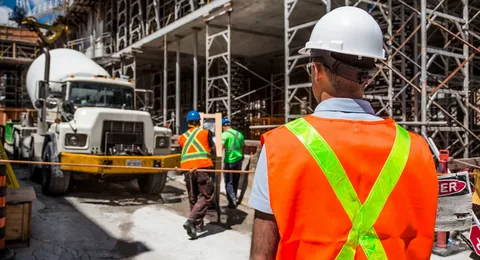Predictive data modeling is changing the way purchasing decisions are made, and the effects are quiet. When procurement teams can clearly predict lead times, risks at stake, changes, and supplier performance, decisions are not just a stake but plans. Early alignment of design intent and implementation strategies avoids costly backtracking. In practice, this looks like specifying construction, n and equipment based, and based on availability and delivery times, and feeding procurement information into design conventions so that what is dreamed up on paper can actually arriv, arrive on site when needed. One practical example is that integrated procurement frameworks reduce the risk of ordering unique items that cannot be delivered on schedule while maintaining budget and design intent. Seriously, in other words, procurement becomes a strategic partner rather than a late responder.
Why is the predictive layer important?
A prediction is not merely a guess; it is a systematic setup based on patterns—supplier lead times, seasonality, price cycles, production bottlenecks, and delivery constraints. Companies that learn to interpret these signals can streamline production schedules and reduce the need for rushed purchases. The real value lies not only in faster orders but in minimizing avoidable waste—faster, yes, but also more deliberate and controlled. When teams managing FF&E procurement services use predictive insights to monitor supplier trends—such as rising costs in a particular finishing category—they can act early by confirming alternative materials, renegotiating terms, or adjusting delivery sequences. This capability protects design integrity without compromising project timelines.
Transforming expectations into practical estimates
Forecasts become useful only when they are translated into concrete financial and logistical plans. Accurate forecasting enables estimators to translate agile planning elements into realistic cost, cost line, and procurement schedules. Like Estimates working based on revised forecasts can determine where risk funds are concentrated, and where extraordinary events will actually be needed. In thiswaya,, the project's financial baseline becomes a living, living document rather, rather than a static wish list that changes as markets change and new information emerges. When estimation and forecasting work together t,, there are fewer surprises and less costly to change.
The role of construction estimating in reducing risks
The e, valuation process process th,r,ives on clarity. Accurate volumes, realistic business assumptions, and an honest assessment of supply chain fluctuations are the foundation of a reliable cost model. Construction estimating services. Those who receive up-to-date forecasts and planning data can pinpoint the items likely to cause a budget variance and recommend a sequence of changes, changes that reduce exposure. They have no idea. Instead, patterns are turned numbers numbers, and those numbers are fed into purchases, purchasing decisions reflect, reect real-world conditions. Over time the f,, feedback loop between forecasting and estimating becomes stronger, and estimates become a central force in making wise rather than reactive purchasing decisions.
From digital signage to on-site reality
Forecasting is only useful if it bridges the gap between the design room and the work area. The real benefits come when spreadsheets guide scheduling, purchasing, and installation scheduling. For example,l, understanding transit trends can mean the difference between occupying a building on tim, time and missing an opening date. And oh yeah, Project managers who build forecasting into day-to-day planning relax where necessary and tighten controls where it matters. This changes the mentality of the team from hasty responses to calculated interventions. It also changes the conversation, with suppliers from transactional to collaborative as suppliers view orders as planned and predictable.
The technical craft of design and documentation
By detailing and coordinating the b, blueprints, the proposal process becomes accurate. And oh yeah, Excellent wording, wording reduces ambiguity and allows customers to get the source right the first time. Skilled drafting teams translate conceptual decisions into clear installation requirements and measurable take-offs. These precise CAD drafters' documents allow procurement to be compared with like-for-like to avoid mismatched parts and confirm compatibility between systems. In short, well-executed documentation reduces procurement margin, margin of error,n d increases confidence in the delivery schedule and installation sequence. The smoother the translation from drawing to order, the fewer surprises the construction team has to face.
How do CAD designers draw the ring?
And oh yeah, CAD designers create working drawings to make the procurement process actionable. Their roles are not just technical; It's very practical. And oh yeah, yyeahWhe. When a designer sketches out a desi, design with installation constraints, o,r models a piece of equipment that will integrate with mechanical systesystemsurement teams can verify fit and function before placing an order. This small step prevents major disruptions. Seriously Good editing anticipates the detailed design phase, identifies potential conflicts early, and gives procurement a reliable reference point to measure against. In this way, the formulation layer acts as a translator between design intent and purchase reality.
Read more: What is End-to-End Procurement?
Final thoughts
Predictive data modeling is not complementary; It's a mentality. It transforms procurement from reactive transactions to strategic timing and choice. When forecasts inform estimators and estimators inform buy, e r, the entire project benefits. If the drawings are accurate and the designers explain the installation facts, procurement can place the right orders at the right time.



